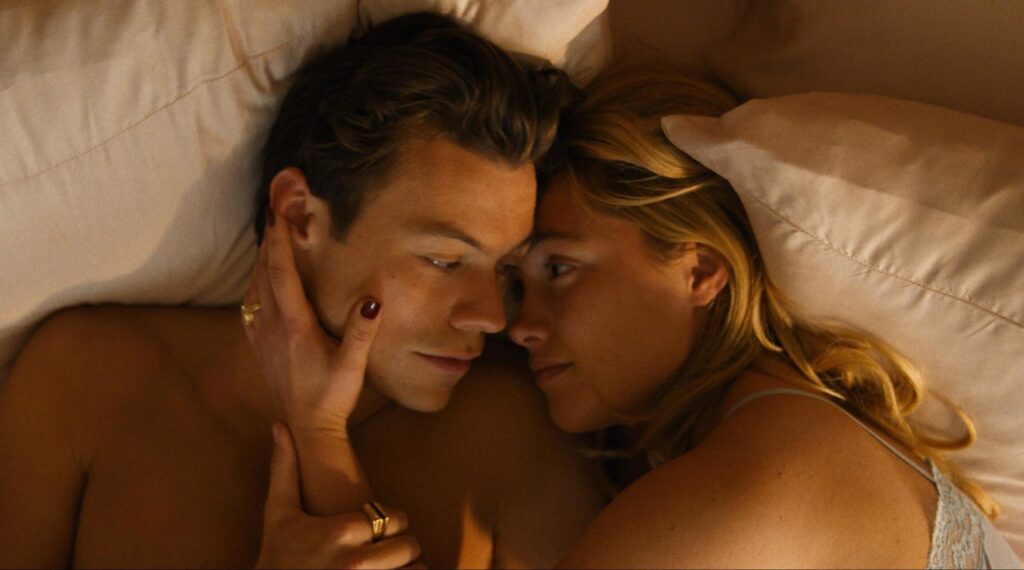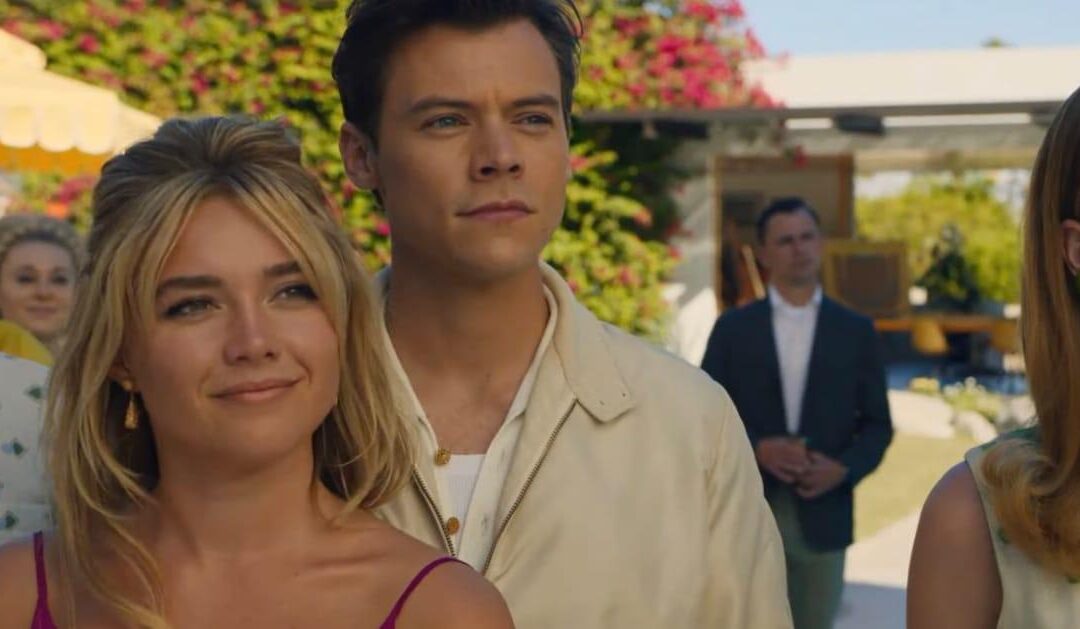Proceed with caution: spoilers ahead!
After months of rumors and drama circulating the film, “Don’t Worry Darling” hit theaters on September 23. Directed by Olivia Wilde, “Don’t Worry Darling” is a psychological thriller set in a 1950s-esque utopia that’s just too good to be true. The story follows Alice Chambers, played by powerhouse Florence Pugh, and her seemingly perfect relationship with her husband Jack, portrayed by pop icon Harry Styles.
“Don’t Worry Darling” received mixed reviews from critics and moviegoers alike. While there are several highlights, notably Pugh’s performance and the visual appeal of the film, the film has its share of stumbles.
The film is visually stunning, with a retro aesthetic featuring bright pops of color against a backdrop of an ominous desert. Visual motifs appear throughout the movie, particularly warped displays of circular imagery that create an eerie tone that leaves audiences shifting uncomfortably in their seats. Achieving this level of uneasiness through visual cues is certainly a win for a psychological thriller.
Pugh’s performance as the leading lady is easily one of the best parts of the film, once again proving her acting is a force to be reckoned with. Pugh showcases an impressive range as Alice, allowing the audience to go on the journey with her as her reality cracks into pieces. Her portrayal of Alice steals the show, and her chemistry with co-stars Chris Pine (Frank) and Olivia Wilde (Bunny) is undeniable.
“Don’t Worry Darling” does a fantastic job of building suspense, but at times falters with where to take that buildup. The trailer intrigued many because of the jarring, out-of-context scenes that piqued audiences’ curiosity. The problem becomes that in the full film, these scenes are equally jarring and choppy. Though the symmetrical motifs are visually stunning, they become repetitive and don’t adapt with the storyline to further the plot. The tension throughout the film is palpable, but the buildup left little time to tie up loose ends, making the final act feel a bit rushed.

Before the film’s premiere, many questioned Styles’ talents as an actor. His performance had a couple of standout moments, though it wasn’t exactly remarkable. Styles did well, considering his claim to fame comes from his musical talent rather than his on-screen abilities, but set against such an experienced, star-studded cast, sometimes he falls flat.
Of course, we have to discuss the ending twist. Though the revelation that the Victory Project was all a simulation was unexpected, it left something to be desired. Perhaps if the final act had more room to breathe, this twist would feel more rewarding. Many of the film’s most unsettling moments were reduced to “glitches” in the simulation, which may be a topic of current fascination but let’s be honest – it’s been done before.
The ending reveals that the Victory Project is inspired by misogynistic attitudes centered around ideas of patriarchy and the nuclear family. The men who enter into this program believe their female partners should “know their place,” which surprise-surprise, is at home. While this is an important and complex topic to explore through a feminist lens, it’s difficult to conclude how well the film handles its subject matter. There’s no doubt Alice is hypersexualized in the movie, as seen through the many sex scenes between her and Jack. But it raises the question if this is because Jack programmed her to behave this way, or if the film played into the Hollywood ideal that sex sells.
After the big reveal, all of the love scenes between the main couple feel, well icky. The audience realizes Alice has been living in a twisted dollhouse created to please the men who pull the strings, which takes away all of her agency and ruins the narrative exploring female pleasure in those moments. Was this all a statement about the control men exert over women? Was Alice’s escape a feminist triumph in fighting against a male-dominated system? Did this character turn into another female lead exploited to drum up excitement over the intimate exchanges between the leading couple? That’s for audiences to decide.
Read more on the latest in film here.

